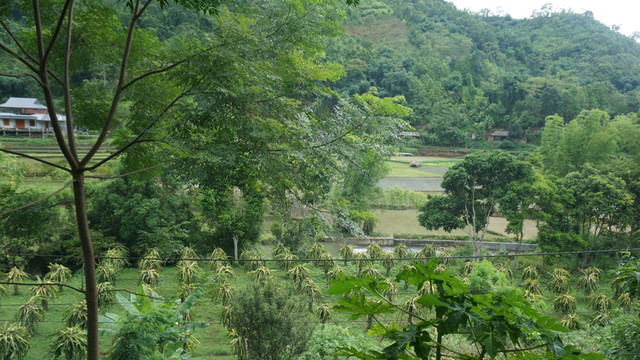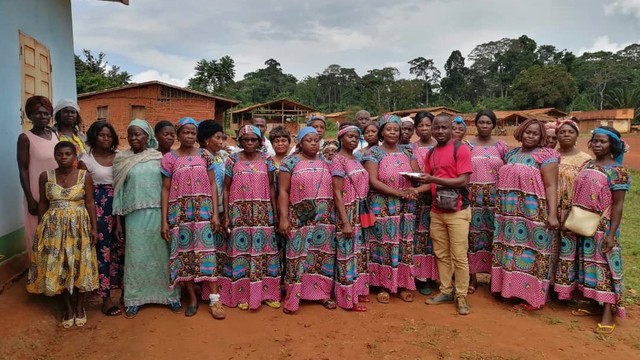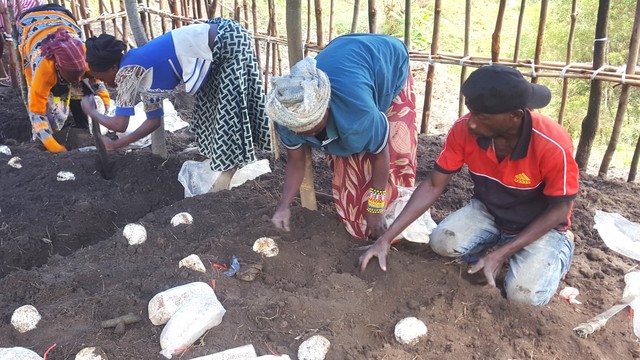IIED launches SAGE version 2.0 – a tool for improving governance and equity in nature conservation
IIED and partners have launched a new version of their Site-level Assessment of Governance and Equity (SAGE) tool, which enables frontline stakeholders and rightsholders to improve the governance and equity of nature conservation. In this blog, Phil Franks argues that bottom-up approaches like this will be crucial for achieving the 30x30 target of the new global biodiversity framework

In December last year, nearly 200 countries signed up to the Kunming-Montreal Global Biodiversity Framework (GBF), a historic agreement that aims to halt, and in time reverse, the catastrophic loss of our planet’s nature and its biodiversity.
The flagship target of the framework is the 30x30 target, a commitment to conserve 30% of land and oceans by 2030 with an approach that is both effective in terms of conservation and equitable in terms of respect for rights, fair processes and fair distribution of costs and benefits.
The theory of change (or implementation strategy) of the GBF is based on global, regional and national policy action, driven largely by national governments. However, such approaches do not have a good track record – only six of the 20 targets of the last global conservation strategy were even partially achieved.
Why should this top-down approach work better this time, and with targets that are more ambitious in terms of the scale, effectiveness and equity of conservation?
Equity in conservation is our focus in IIED – the belief that all conservation areas, old and new, should be equitably governed and should respect the rights to land and resources and human rights of Indigenous Peoples and Local Communities (IP and LCs).
This is not only to avoid perpetuating and replicating the all-too-common injustices of conservation: equitable governance and respect for rights can deliver better outcomes for nature as well as people and, indeed, should be a precondition for new conservation areas.
An alternative theory of change
There is an alternative bottom-up theory of change. This involves supporting stakeholders and rightsholders at the site level to build more equitable governance and – with the help of practitioner networks and enabling policy – reaching sufficient scale of success to become institutionalised.
Successful examples of this approach include community forestry in Nepal, small-scale fisheries in the Philippines, and community-based natural resource management in Southern Africa.
Bottom-up does not mean expensive
This might sound like a very expensive proposition because of the need for changing practice at scale, but in the internet era, scale can be achieved as much, if not more, through networks and social movements as by funding replication. And a big plus for governance is that interventions tend to be relatively inexpensive compared to investments in improving management. Bottom-up does not mean less of a role for government; it just means a different role – enabling rather than driving change.
But to build more equitable governance and respect for rights does require practical tools. To meet this need, IIED and a team of national-level partners have over the past four years been developing a tool called Site-level Assessment of Governance and Equity (SAGE) which has now been successfully used in over 60 conservation areas across 25 countries.
Launching a new manual and tool
Now the SAGE initiative is changing gear from tool development to scaling up. Our new version of SAGE is complete with a detailed user manual and an associated, downloadable Excel-based tool for data entry and analysis (xlsx).
SAGE is based on the well-known Management Effectiveness Tracking Tool (METT) for assessing the management of conservation areas. But there is a crucial difference: it is the site-level stakeholders and rightsholders that conduct the assessment and identify actions that they can take to make governance at the site more effective and equitable in delivering conservation and social outcomes.
Improvements over version 1.0 include options to tailor the assessment process as well as questions to the context of the site and a way to prioritise the many ideas for action that the tool typically generates.
Last week, I attended a meeting in Cambridge, UK, to design a global partnership of state and non-state actors that will have a major role in boosting the implementation of the 30x30 target. The partnership has some way to go in terms of defining its modus operandi and priority issues. We suggest that if the 30x30 target is to be more successful than its predecessors and do justice to its much stronger emphasis on equity and rights, there needs to be:
- More emphasis on supporting non-state actors, and in particular, organisations of IP and LCs and other civil society actors, for example, young people – and indeed, engaging them as key partners, and
- Support for both the bottom-up theory of change described here, and the conventional top-down theory of change of the GBF.
SAGE speaks to both. The use of SAGE is listed as a progress indicator for the 30x30 target, and we believe that this new version will indeed make a substantial contribution to achieving this crucial target that is the cornerstone of efforts to combat the nature crisis.
Download the Excel-based tools for data entry and analysis
- For seven groups (xlsx)
- For seven groups (xlsx) – with example data from Kenya




